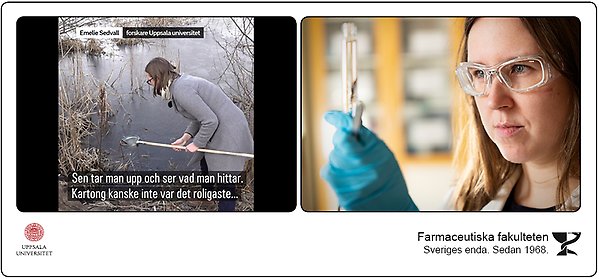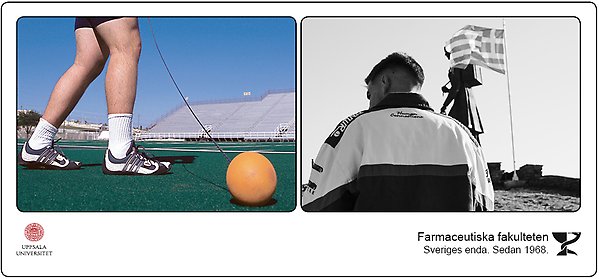Selected publications
Here we present a selection of our scientific publications and news about us in the media. You can always contact us for more information on our work.
Insects in the Fyris river carried 33 different pharmaceutical substances
The development of more sensitive chemical analysis methods is enabing identification of active pharmaceutical substances in our environment. In a study of five insect species found in the Fyris river in the spring of 2019, Emelie Sedvall, PhD student in Analytical Pharmaceutical Chemistry, located traces of 33 drugs. The substance she found in the highest concentrations was antibiotics.

The results, published in 2022 in scientific journal Environmental Advances, quickly attracted a lot of attention. Numerous national media reported on the study, including Swedish Vetenskapsradion and TT. Emelie Sedvall also had the opportunity to return to Fyrisån when a news team from Sveriges Television visited Uppsala University and the research group in Analytical Pharmaceutical Chemistry.
Synthesis, characterization & detection of new oxandrolone metabolites as long-term markers
The discovery and implementation of the long-term metabolite of metandienone, namely 17β-hydroxymethyl-17α-methyl-18-norandrost-1,4,13-trien-3-one, to doping control resulted in hundreds of positive metandienone findings worldwide and impressively demonstrated that prolonged detection periods significantly increase the effectiveness of sports drug testing. For oxandrolone and other 17-methyl steroids, analogs of this metabolite have already been described, but comprehensive characterization and pharmacokinetic data are still missing.

In this article we introduce studies of specimens that demonstrate significantly longer detection periods (up to 18 days) for the new oxandrolone metabolites compared to commonly targeted metabolites such as epioxandrolone or 18-nor-oxandrolone, presenting a promising approach to improve the fight against doping.
Four athletes stripped of medals from the Athens Olympics
In this article, Swedish newspaper Expressen reports on the consequences of one of our research projects with focus on Cunninghamella, a filamentous fungus that breaks down substances in a similar way to humans and horses. Using the fungus, we discovered that oxandrolone, an anabolic steroid that the body quickly excretes, leaves behind another, more long-lived and traceable substance.

When our results reached the World Anti-Doping Agency, WADA, they took 105 urine samples from the Olympic Games in Athens in 2004 after spending eight years in the freezer. Using the new analytical method, the agency found oxandrolone metabolites in several samples. A series of retroactive disqualifications were carried out and in four cases medals were revoked, among them Yuri Belonog's gold medal in the shot put and Ivan Tikhon's silver in the hammer.
Contact
- Mikael Hedeland
- Institutionen för läkemedelskemi, 070-657 1663
